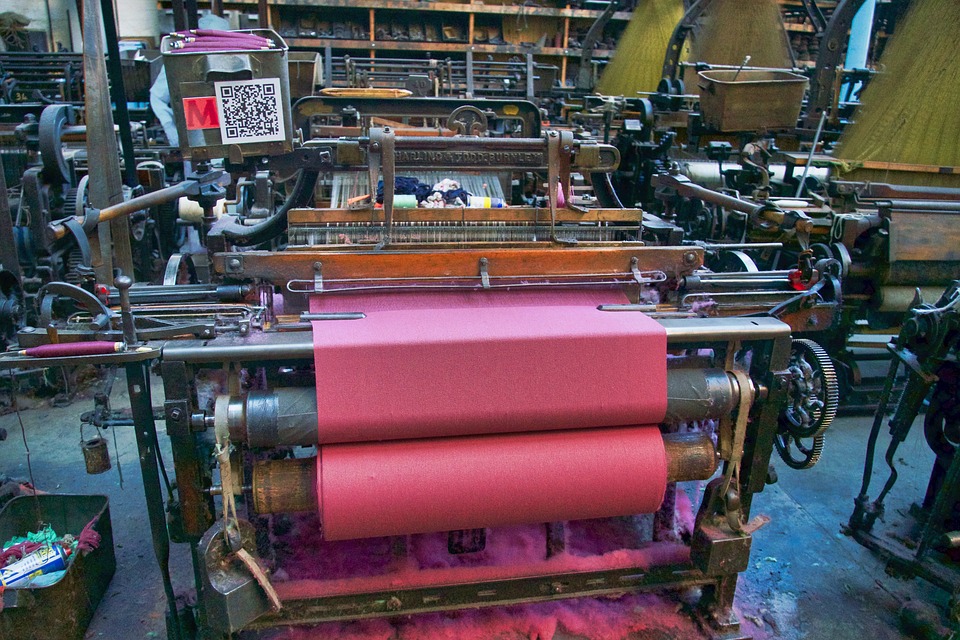
What’s news in the processing industry?
The government needs to work with various entrepreneurship development institutes for creating courses and awareness projects for promoting the upcoming technologies, informs Dr Neha Mehra.
The textile industry is a large industrial sector. Increase in population as well as spending capacity has led to large increase in the production of textiles and clothing. While the industry majorly focuses on the end product, it has now become prevalent to shift the focus onto the science and technology aspect of the textile industry. The ability of a country to create new machines and technology gives its manufacturers an even larger share of this market, which, in turn, results in greater profits. The processing sector of textile is undoubtedly the most significant stage in the value chain contributing to the end user an array of properties like easy care and wrinkle free finishes besides aesthetic value addition in terms of colours, prints and designs. The value addition happening at this stage is often manifold, with a range of other functional finishes like moisture management, antimicrobial, oil and water repellant, to name a few. Specialty chemicals have played a significant role in the production of fibres and textiles.
However, Textile processing generates many waste streams, including water-based effluents and air emissions, solids and hazardous wastes. The nature of the waste generated depends on the type of textile facility, processes adopted, technologies operated, type of fibres and chemicals used. In India as well, the government is taking steps to reel in the textile industry to save precious water resources. In India, there is a huge trend of investment in wastewater treatment for liquid discharge. It’s now common for factories to reuse 90% of their water.
The mantra for modern textile wet processing is to stick to aqueous eco-friendly routes, following the principles of green chemistry. In such lines, Huntsman has developed a line of dyes for cotton called Avitera that bonds to the fibre more readily, thereby requiring one-quarter to one-third less water and one-third less energy. On the other hand, a startup Stony Creek Colours is working on returning to produce indigo from plants. Stony Creek is developing varieties of leguminous indigo plants that can provide a high-yield, high-profit crop for Tennessee farmers looking for an alternative to tobacco. The indigo molecule itself is exactly the same as the synthetic version, with one small difference: Synthetic indigo has a tighter crystal formation that makes it more difficult to reduce, and thus, dye houses can reduce natural indigo in bacterial fermentation vats or use more common reducing systems. Other start-ups have also turned to biology—in particular, engineered microbes—to reduce the use of chemicals in textile dyes. High performance and renewable dyes can be produced using microorganisms for mainstream textile as per UK-based Colorifix and the French firm Pili.
On the other hand, awareness and monitoring the carbon footprint are of paramount importance in the art of present-day textile processing. Further, certain newer tools which are slowly creeping into these textile technologies and which are also being successfully used are manipulation with laser, radio waves drying tools, plasma bonding techniques, ionic liquids for solvent effects, ultrasonic treatments, supercritical fluids and enzymatic treatments. All these technologies are contributing to more sustainable processing.
The various upcoming technologies in processing industry are as follows:
- Digital printing – Digital printing is a crucial technology enabling printers as well as designers to have a platform to create, innovate best designs for printing that efficiently capitalizes on their skill set. It is considered as the ‘next generation’ printing technique. The fact that there is no limitation on the usage of colours or repeat size as well as a freedom to print multiple colour shades on the fabric make it advantageous over other methods. It is an environment friendly method as there is no discharge of dyes and chemicals and saves water.
- Ultrasonic assisted dyeing – Ultrasonic waves absorbed in liquid system, the phenomenon of cavitation takes place, which is the alternate wave formation, oscillation and collapse of tiny bubbles or cavities. The ultrasonic cavitation accelerates the rate of dyeing and increases the dye uptake on fabric. The typical dyeing process involves the use of chemicals and thermal energy, which can be reduced, by using ultrasound energy. There may also be a possibility of reducing the pollution load on effluent water.
- Electrochemical dyeing – The textile industry uses the electrochemical techniques both in textile processes (such as manufacturing fibres, dyeing processes, and decolorizing fabrics) and in wastewaters treatments (colour removal). In this process the chemical reducing agents are replaced by electrons from the electric current. The electrogenerated species are able to bleach indigo-dyed denim fabrics and to degrade dyes in wastewater in order to achieve the effluent colour removal.
- Plasma – Plasma is referred to as the fourth state of matter and is a mixture of partially ionized gases, where atoms, radicals, ions and electrons can be found. Plasma used in the textile industry consists of gases such as oxygen, air, nitrogen, argon, helium or fluorine. The technology is used for surface modification in order to increase the efficiency of several treatments and processes. The physical and chemical changes on the fibres are obtained by activation, cleaning, oxidation, polymerisation, radical formation and creation of nano-structure caused by the plasma. The wide range of application areas for plasma technology includes pretreatment (desizing), change of wettability, pretreatment for printing and dyeing (increased affinity for dyestuff), antibacterial finishing, improvement of efficiency of wet finishing processes and influence of the physical properties. The plasma technology is considered to be very interesting future oriented process owing to its environmental acceptability and wide range of applications. The processes do not produce waste waters or chemical effluents, so the methods are economical and reduce the environmental impacts caused by the chemical textile industry.
- Supercritical CO2 dyeing – Supercritical fluids are materials that are above the critical pressure and temperature of the material. CO2 is non-toxic, non-hazardous and a non-corrosive gas and in the super-critical fluid state can dissolve disperse dyes in them. Dyeing with super critical CO2 is still at its infancy. It has been proved time and again that its successful at laboratory scale. Dyeing with this system has been found successful with synthetic as well as natural fibres.
- Nanotechnology: Nanotechnology (NT) deals with materials 1 to 100 nm in dimension. Nanotechnology in textile is defined as the understanding, manipulation, and control of matter in the nanometre range, such that the physical, chemical, and biological properties of the materials (individual atoms, molecules, and bulk matter) can be engineered, synthesized, and altered to develop the next generation of improved materials, devices, structures and systems. The fundamentals of nanotechnology lie in the fact that the properties of materials drastically change when their dimensions are reduced to nanometre scale. This technology allows us to develop desired textile characteristics, such as high tensile strength, unique surface structure, soft hand, self-cleaning, water repellency, fire retardancy, antimicrobial properties, and the like with less energy, making them sustainable.
- 3D printing – 3D printing technology is considered as one of the most emerging and significant technologies of the fourth industrial revolution in the fashion industry. Nowadays, textile and fashion industry use this technology to create or design fantastic 3D printed fashion with the help of different shapes and geometries which was never made before, but they can also prototype and it makes the sustainable clothing production process. It can be used to design specific patterns and then print only the amount of product which is needed. This allows cutting back on wasting resources for each garment, and ensuring that the manufacturing process is not destroying to the environment.
- Foam finishing – Foam finishing is a novel application technique for treating porous substrates with foamed chemicals at low, wet pick-ups. It involves use of a rapidly-breaking low-density foam or froth as the delivery medium for finishing chemicals, precise metering and flow control for delivery of foam to the substrate, pressure-driven impregnation of the foam into the substrate, and an applicator system designed to allow uniform high-speed application and collapse of the foam in a single step. Foam finishing leads to energy savings anywhere between 30 to 50 per cent.
The emerging technologies are promising for better development of textiles. However, to assure affordability, higher adoption of these products across the population, increasing awareness is of ultimate importance. India is currently witnessing a boom in entrepreneurial spirit with fresh graduates from various top institutes opting for entrepreneurship. The government needs to work with various entrepreneurship development institutes for creating courses and awareness projects for promoting these upcoming technologies. Also, incentivising research and development in the field of sustainable processing of textiles shall help in nurturing the culture of indigenous research, instead of depending only on joint ventures and technology transfer for manufacturing.
At Textile Manufactures Dept. VJTI, the research is also focused on these new upcoming technologies. While the developments are taught in the subjects of ‘Sustainable Textile Manufacturing’ at the UG as well as PG level, various research works also support the same. Development of microbial dyes, natural dyeing as well as multifunctional finishing using essential oils, green composites, wound healing products with natural nanomaterials etc. are some of the research done in the green chemistry section. While use of nanotechnology for thermal insulation, composites for various applications, reuse of waste for various applications are the other areas of the recent research.
While we are very much aware of the innovations and developments at the laboratory scale, the industry seems reluctant to take it forward on the large scale. Piyush Goyal, Union Minister for Commerce and Industry, Textiles , Consumer Affairs, Food & Public Distribution has urged the textile industry to focus on speed, skill and scale and get into innovative partnership. He expressed hope that a modern and upgraded textile machinery ecosystem would have a cascading impact on unorganised Indian textile industry. This would set the momentum for continuous advancement and innovation resulting into ever evolving & enhancing competitive capabilities along the value chain. He mentioned that today, India under the leadership of Prime Minister Narendra Modi and the Atmanirbhar Bharat mission feels reinvigorated, re-energised to think big & bold, to be more ambitious and to set for stiff targets. Collaborations between industry and institutes shall support in taking the various research projects on a large scale. To obtain the growth potential, the textiles ecosystem in India needs to grow significantly with a focus on research and innovation.
About the author:
Dr Neha Mehra has completed her B Tech followed by PhD (Tech) in Fibres & Textile Processing Technology from Institute of Chemical Technology (ICT), Mumbai. She has 18 publications in national and international journals and 9 paper presentations in conferences. She has an Indian Patent to her credit and has written two book chapters. She has been working with VJTI since 2017 and has a total teaching experience of about 8 years.





